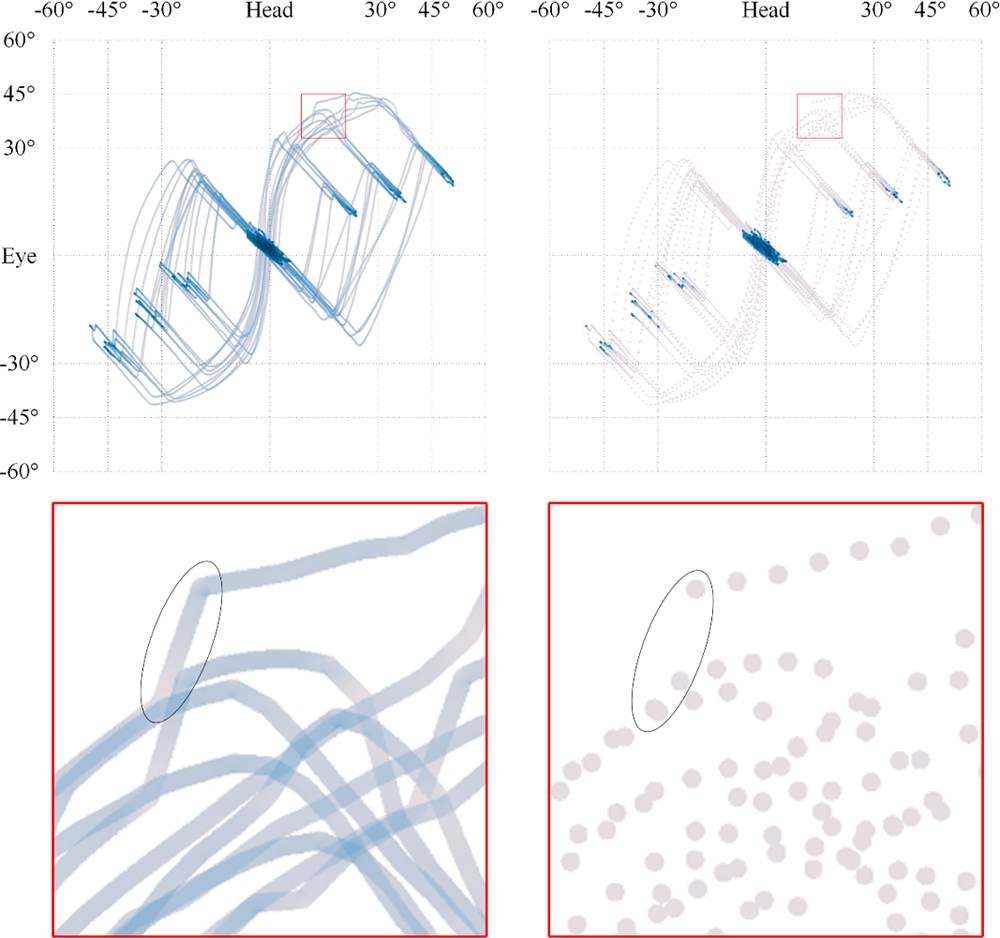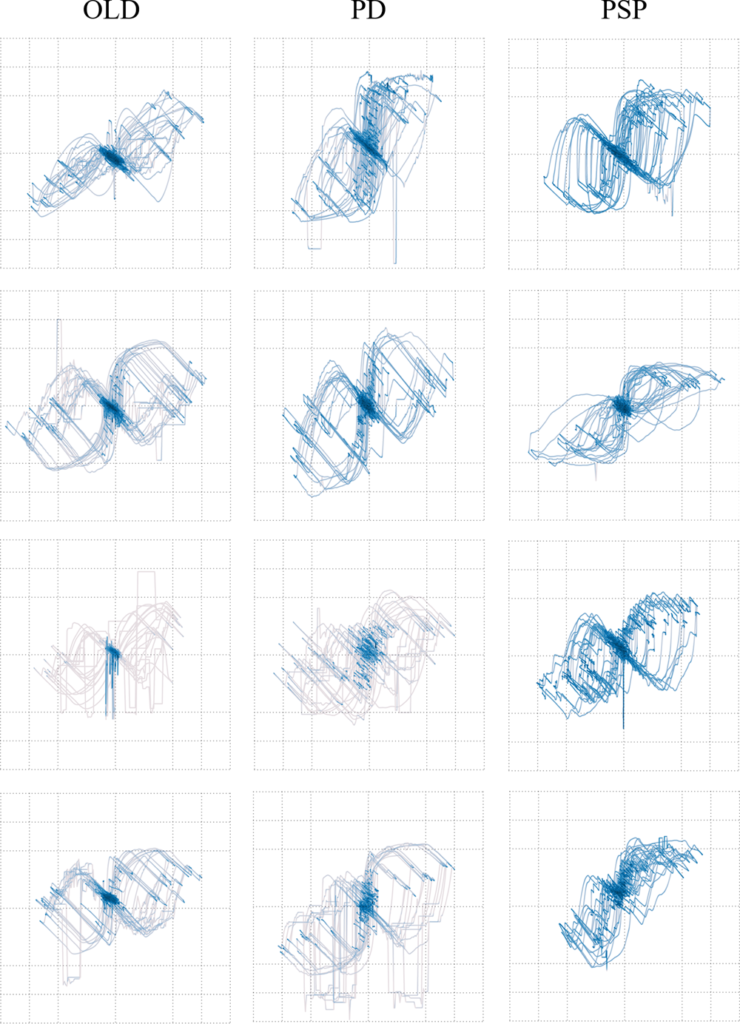In cooperation with the Robert Bosch Krankenhaus (RBK) in Stuttgart (Germany), we have analyzed eye-head coordination while walking in healthy and sick participants with neurodegenerative diseases. Proper coordination is essential for body balance and thus health. Injuries and other consequences from falling over can impair quality of life massively. Often, old people never get on their feet again when breaking a leg or hip.
One possible cause for falling over is the absence of the so-called vestibule-ocular reflex, which keeps your eyes focused to one point during head movement. To study this reflex, scientists from RBK have put participants on a treadmill and made them focus multiple LEDs [1].

The participants were recruited from four groups: young people (YOUNG), old people (OLD), patients with Progressive Supranuclear Palsy (PSP) and patients with Parkinson’s disease (PD). We helped the scientists at RBK to analyze the correlation between head and eye movement using our time continuous scatter plots [2]. Let us use an example participant (YOUNG) to introduce and compare the technique against conventional scatter plots: First, we use lines instead of points for to provide temporal context. Furthermore, a line is considered denser (blue) if the movement of the participant was slow and less dense (gray) if the movement was fast.

Next, let us compare YOUNG to OLD, PD, and PSP (cf. scatter plot matrix). The first thing you may notice is that there is more blue present in the other groups – this is due to their movement being slower. Next, you may see line jitter in scatter plots of non-young partictipants – this is because of bad jerky eye-head coordination, i.e., a non-functioning vestibule-ocular reflex. Furthermore, if you compare the 60°, 45°, 30°, and 0° positions across the diagonal, you may notice a difference in the participants precision, as well as, differences between the movement to the left and right. Other findings require further medical background knowledge.

We conclude that our visualization provides a comprehensive presentation of the complex function and dysfunction of gaze shifting movements in a single picture – always useful in everyday medical life.
Reference:
[1] K. Srulijes, D. J. Mack, J. Klenk, L. Schwickert, E. a. F. Ihlen, M. Schwenk, U. Lindemann, M. Meyer, S. K.C., M. a. Hobert, K. Brockmann, I. Wurster, J. K. Pomper, M. Synofzik, E. Schneider, U. Ilg, D. Berg, W. Maetzler, and C. Becker, “Association between vestibulo-ocular reflex suppression, balance, gait, and fall risk in ageing and neurodegenerative disease: protocol of a one-year prospective follow-up study,” BMC Neurol., vol. 15, no. 1, p. 192, 2015.
[2] S. Grottel, J. Heinrich, D. Weiskopf, and S. Gumhold, “Visual Analysis of Trajectories in Multi-Dimensional State Spaces,” Comput. Graph. Forum, vol. 33, no. 6, pp. 310–321, Sep. 2014.

